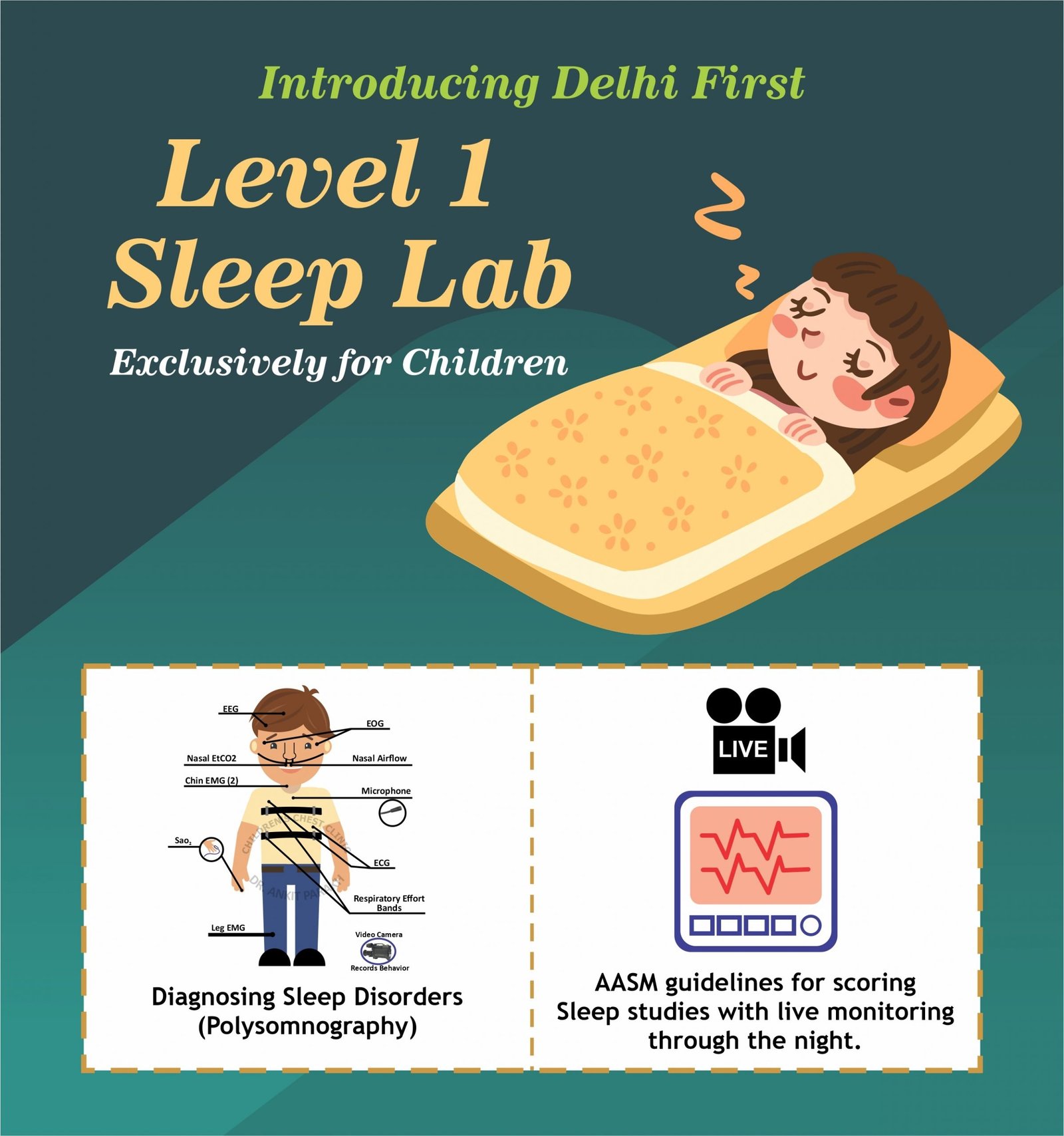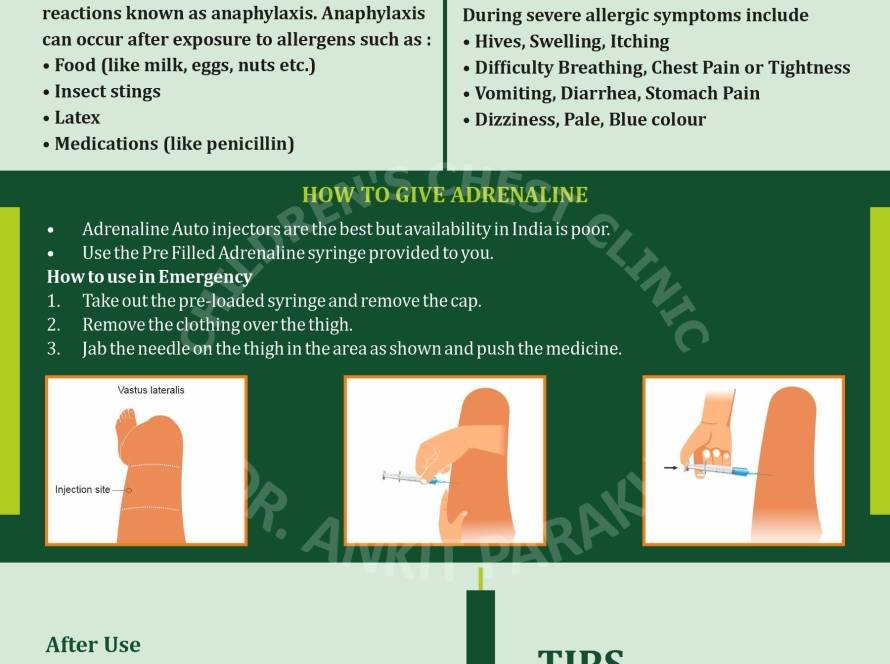Polysomnography, also called a sleep study, is a comprehensive test used for diagnosis of various sleep disorders in children and adults. Polysomnography or sleep study should ideally be performed for a complete night at a sleep lab. The sleep laboratory at Children’s Chest Clinic is a Level 1 sleep laboratory exclusively for children and adolescents.
What does a Polysomnography or Sleep Study record?
Polysomnography or a sleep study records child’s brain waves (EEG) which helps to analyze sleep stages and cycles to identify if or when sleep patterns is disrupted. Children cycle between sleep stage called non-rapid eye movement (NREM) sleep and rapid eye movement (REM) sleep. Normally multiple sleep cycles are seen throughout the night with cycling between NREM and REM sleep every 90 minutes. Various sleep disorders disturb this sleep process. The eye movements and chin muscle tone are also tracked during the polysomnography to help identify the various sleep stages.
Polysomnography or sleep study records the breathing of the child with the help of a nasal cannula put outside the child’s nose, belts which are put on the child’s chest/tummy and oxygen sensor or SpO2. There are various disorders which can affect the breathing of children during the night. Heart rate and rhythm is also recorded with the help of a ECG trace. Leg movements are also monitored during a sleep study. During a polysomnography or a sleep study a complete video-audio recording is also done which helps to identify snoring, abnormal postures, behaviours, movements and positions during sleep.
A trained sleep technician would monitor the child during the sleep study overnight.

When is a Polysomnography or a sleep study required in children?
Your doctor may recommend polysomnography or sleep study if he or she suspects that the child has:
- Snoring with suspected sleep apnea
- Children with Obesity and snoring
- Children with syndromes such as Down’s syndrome, Prader Willi syndrome, Bardeit Biedel syndrome, Craniofacial syndromes, Pierre Robin syndrome
- Children with neuromuscular disorders like Duchene’s muscular dystrophy, spinomuscular atrophy, congenital myopathies, congenital muscular dystrophies, myotonic dystrophy and congenital myasthenic syndrome
- Periodic limb movement disorder
- Excessive daytime sleepiness
- Unusual behaviours or movements during sleep
How to prepare for a Polysomnography or a sleep study?
No real preparation is needed before a sleep study in children. You shall be called to the sleep laboratory around 9 pm at night and will have to stay overnight. The child can be given a normal meal before coming for the sleep study. Do bring in loose night clothes like pajamas or a night suit. Girls having long hairs are advised to use a shampoo on the morning before the sleep study. It is advisable to avoid using any lotions, oils or gels on the hairs as they interfere with the use of the electrodes. Avoid napping in the afternoon before a sleep study. Use of caffeine or alcohol during the afternoon and evening before polysomnography should be avoided as it may interfere with the sleep pattern.
What you can expect during a Polysomnography or a sleep study?
The sleep laboratory room where the polysomnography or sleep study is done is room with a bed for the patient and one bed for the person accompanying. The room is kept dark and quiet during the test. The sleep lab has a low-light or Infra Red video camera which can record even in a dark room. Sleep lab also has an audio system which helps to have a two way communication with the technician from their monitoring area outside the room. A washroom and a pantry is available inside the Children’s Chest Clinic premises.
After the child gets ready for bed, our sleep technician will place sensors on the scalp, temples, chest, tummy and legs using a mild adhesive. The sensors are connected to a small sleep study equipment which is worn on the chest. The sleep study equipment is connected to the computer with a bluetooth system which collects and displays all data. The data is recorded for the complete night during the study.
After the study is over (approximately 6 am in morning) the sleep technician would remove the sensors. You shall be allowed to leave for home.
What are the risks during a Polysomnography or sleep study?
Polysomnography or a sleep study is a non-invasive and painless test. There are no injections involved during the study. Occasionally, children might feel some irritation over their skin caused by the adhesive used to attach test sensors to their skin.
When shall the Polysomnography or Sleep Study report be given?
The information gathered during polysomnography or sleep study is evaluated and scored by our sleep consultant. This usually takes 2-3 days. You shall be given a follow-up appointment, where the results of the polysomnography or sleep study shall be discussed with you in detail and further treatment will be suggested.






